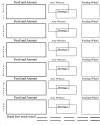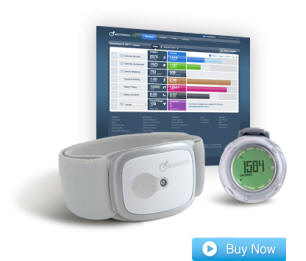Explore Record Keeping Using Various Styles of Diaries, Journals, or Body Monitoring



Keeping records can be the key to achieving a healthier life and maintaining it. It can help support your efforts to eat more healthfully and allow you to be more physically active, as well as, help you overcome obstacles that get you off track. Through practicing this process you learn how to be your own lifestyle coach.
Why keep records? Good managers keep records. Come to know yourself and honor you with your choices!
-
You will see what is happening in your life.
-
You can identify patterns (patterns of people, places, foods). You will see patterns that promote success and patterns that show you "danger zones"--areas where you get off track.
-
You are then able to review the facts.
-
Then you PLAN realistic solutions!
Records help you see what is happening and track your goals. You may see patterns you want to change, and patterns that show your progress. Keeping a diary can also trigger a positive response, because when you write an entry, you’ll have the opportunity to think about your choices.
All this
information can help you plan strategies to address any problems. Explore:
Overcome
Your Obstacles to Healthful Eating: Discover Your Solutions!
and
Overcoming Barriers To Keeping Records.
There are many ways to record your daily food or activity choices. Experiment with different methods until you find the one that works for you. Included in this section are several different types of journals.
It’s important to find a system that works for you because you’re the one who has to be able to sustain the practice. So keep it fun & simple. You could begin by:
-
Just being more aware of your daily lifestyle choices.
-
Or you might write foods down in a small spiral notebook.
-
You could jot down food choices and the amounts (perhaps weighing and measuring to double check portion sizes)
-
If you find yourself eating because of emotions or moods, you might keep a "food and mood" journal to see your patterns.
Choose journal tools that support your awareness and ability to untangle patterns and then practice positive substitutions that can work for you.
Try the forms below—if you
like one, you can print off the page. Forms can also be combined to meet your
particular needs.
For any kind of food record-keeping, you may find it helpful to:
-
Keep your record and pen in the area where you usually eat.
-
List the foods and the amount you eat as soon as possible after you eat them.
-
Check the nutrition label for information about nutrition content.
-
Compare your food intake with your nutritional goals.
-
Investigate too: Volumetrics and Which Puzzle Pieces Contribute to Your Overweight?
Scott & Charlene's Weekly Food Check Off Diary: Small, but mighty!
|
Water |
qqqqqq |
|
Fats |
|
|
|
|
S |
Starch |
qqqqqq |
|
Protein |
qqqq |
qqq |
|
|
Vegetables |
qqqqq |
qqq |
Dairy |
|
q |
|
|
Fruit |
qqq |
q |
Sweets |
q |
|
|
|
Water |
qqqqqq |
|
Fats |
|
|
|
M |
Starch |
qqqqqq |
|
Protein |
qqqq |
qqq |
|
|
Vegetables |
qqqqq |
qqq |
Dairy |
|
q |
|
|
Fruit |
qqq |
q |
Sweets |
q |
|
|
|
Water |
qqqqqq |
|
Fats |
|
|
|
T |
Starch |
qqqqqq |
|
Protein |
qqqq |
qqq |
|
|
Vegetables |
qqqqq |
qqq |
Dairy |
|
q |
|
|
Fruit |
qqq |
q |
Sweets |
q |
|
|
|
Water |
qqqqqq |
|
Fats |
|
|
|
W |
Starch |
qqqqqq |
|
Protein |
qqqq |
qqq |
|
|
Vegetables |
qqqqq |
qqq |
Dairy |
|
q |
|
|
Fruit |
qqq |
q |
Sweets |
q |
|
|
|
Water |
qqqqqq |
|
Fats |
|
|
|
T |
Starch |
qqqqqq |
|
Protein |
qqqq |
qqq |
|
|
Vegetables |
qqqqq |
qqq |
Dairy |
|
q |
|
|
Fruit |
qqq |
q |
Sweets |
q |
|
|
|
Water |
qqqqqq |
|
Fats |
|
|
|
F |
Starch |
qqqqqq |
|
Protein |
qqqq |
qqq |
|
|
Vegetables |
qqqqq |
qqq |
Dairy |
|
q |
|
|
Fruit |
qqq |
q |
Sweets |
q |
|
|
|
Water |
qqqqqq |
|
Fats |
|
|
|
S |
Starch |
qqqqqq |
|
Protein |
qqqq |
qqq |
|
|
Vegetables |
qqqqq |
qqq |
Dairy |
|
q |
|
|
Fruit |
qqq |
q |
Sweets |
q |
|
|
|
Calories: Starch = 80 Fruit = 80 Dairy = 90 |
|||||
|
|
Vegetables = 25 Fats = 45 Protein = 75 |
|
||||
For a PDF page (4 diaries/page) which can be cut in 1/4's: Scott & Charlene's FOUR Weekly Food Check OFF 3x5.pdf
This diary is about 3 X 5" and is for a complete week. How to use it: You can just check off a serving from the various food groups. To find out what counts as one serving--a "reference" amount for different foods visit Kaiser Permanente's Weight Loss For Health Pyramid. Check them off after you eat them: Starch, Fruit, Dairy, Vegetables, Fat, and Protein, and sweets. The "grayed out" boxes indicate the upper range of each food group. For example the "starch group" is variable from 6 - 8 servings, or the "fruit group" goes from 3 - 4 servings, the "dairy group" goes from 2 - 3 servings, etc.
On the back of the form for each day, if desired, you can record the actual foods that you ate. This is a great way to remember exactly which foods you ate as well as the numbers of servings.
Two other formats from Jerry:
 and
and

There are
alternatives to using these forms. You may want to:
Keep records in your personal calendar,
or use a notebook or blank journal, or perhaps develop your own spreadsheet.
You could use a computer nutrition analysis programs below to keep track of activity and nutrient composition.
Actual Diary
Examples from Bob
See examples below:
|
The BodyMedia FIT system gives you highly accurate information on activity, calories and sleep patterns – the most accurate in the market. Clinical study results show it can improve weight loss up to 3x*! BodyMedia FIT is an on-body monitoring system that consists of the BodyMedia FIT Armband monitor, online Activity Manager**, an optional Display and free downloadable apps for mobile device users. BodyMedia FIT Armbands automatically track the calories burned during your daily activities — from pumping iron to using an iron — and monitor the quality of your sleep, an important factor in weight loss. The information tracked can easily be managed with BodyMedia's online Activity Manager. Add in the easy-to-use food log and you have the right information to improve your weight loss.*Data on file; **Subscription required.
Here are some links from our website that will give you some further information:
What is BodyMedia FIT: http://www.bodymedia.com/Products/Learn-More/What-is-BodyMedia-FIT (product videos located on this page)
How it works: http://www.bodymedia.com/Products/Learn-More/How-it-works (Activity Manager visuals/graphs located on this page)
Sensors: http://www.bodymedia.com/Products/Learn-More/Sensors
Benefits: http://www.bodymedia.com/Products/Benefits/Calorie-Management
Clinical Study Results: http://www.bodymedia.com/Amazing-New-Clinical-Study-Results
